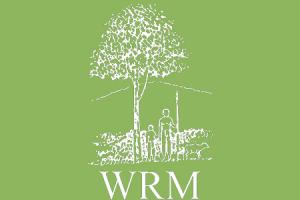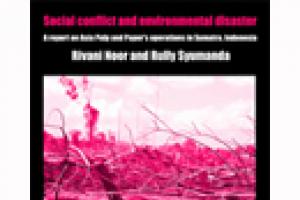Members of twenty-five Indonesian NGOs and community organisations met in Riau, Sumatra, on 13th January 2007, to give voice to their serious concerns about the impacts of the pulp and paper industry and its fastwood plantations on people and forests.
Indonesia
Other information
19 June 2007
Bulletin articles
19 June 2007
Indonesia has the world’s third largest area of tropical forest, after Brazil and the Democratic Republic of Congo. Although only 1.3 per cent of the world’s total forest area, Indonesia’s forests are home to 10 per cent of the world’s flora species, 12 per cent of the world’s mammals, 17 per cent of the world’s reptiles and amphibians, and 17 per cent of the world’s birds. Indonesia is the second country in the world in terms of wildlife richness. Indonesia’s forests are also home to endangered species such as orangutan, tigers, rhinos and Asian elephants.
Bulletin articles
23 May 2007
On April 26, the Swedish Royal Academy of Agriculture and Forestry organized in Stockholm the seminar “Tilting forest industries from North to South”, aimed at discussing the growing tendency of the Swedish tree plantations and pulp industry to invest in Southern Countries such as Brazil, Uruguay and Indonesia.
Other information
23 May 2007
WRM has created a new video section in its website. You can find it in the page’s left column or going directly to http://www.wrm.org.uy/Videos/index.html.
Bulletin articles
29 January 2007
The HCVF concept has been applied in Indonesia over the last five years in attempts to identify and protect high conservation value forests from conversion to pulp wood plantations. APP and APRIL, the two largest pulp producers in Indonesia, have both responded to market pressure orchestrated by WWF and Friends of the Earth affiliates by conducting and commissioning HCVF assessments in forest areas planned for conversion to Acacia plantations.
Bulletin articles
29 January 2007
Indonesia has some of the most biodiverse rainforests in the world, but also the highest deforestation rate. The HCVF (high conservation value forest) concept has taken hold in Indonesia as a means of reconciling economic pressures to open up forest areas with the need to reduce the rate of forest loss.
Other information
26 January 2007
Open letter to the European Parliament, the European Commission, the governments and citizens of the European Union
Sawit Watch. Bogor, 26 January 2007
Other information
30 November 2006
Indonesia is one of the world’s most populous and rural countries, with a total population of 220 million people.
Other information
30 October 2006
Later this year, United Fiber Systems plans to open a new 700,000 tonnes a year wood chip mill at Alle-Alle on the island of Pulau Laut. The mill is the first step of UFS’ proposed pulp developments for Kalimantan. The wood chips will be exported to feed pulp and paper mills in China.
Other information
30 September 2006
Wherever industrial tree plantations are planted in the South, governments provide a range of subsidies to investors. In Indonesia, the government has handed out billions of dollars for plantation development. The plantation and pulp sectors have also received generous aid support. The World Bank and the Asian Development Bank funded studies in the 1980s. A range of export credit agencies helped finance the construction of pulp mills.
Publications
22 August 2006
By Rivani Noor and Rully Syumanda
Other information
1 August 2006
Extensive cultivation of oil palm and the resulting oil extraction have always been linked to repression. Plantation cultivation was originally established by colonial regimes. The rapid expansion of plantations in Asia following the Second World War was encouraged in connection with forest clearing and was used as a weapon in combating Malay rebels.


